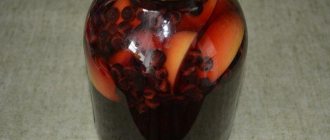What kind of disease is this
Galactocele of the mammary gland is a pathological change in the tissues of the organ, accompanied by the formation of a cystic cavity filled with milk. Milk contents can be either regular or modified.
Doctors consider the disease to be benign if treatment is started when the first symptoms appear. In advanced cases, it is possible to transform a benign cyst into a malignant one with the subsequent development of full-fledged cancer.
The disease occurs mainly in nursing mothers. Sometimes in mothers who have already stopped breastfeeding for six to ten months. Less often - in pregnant women. And very rarely in men.
Malignant tumors
Some breast diseases also affect tissues of other organs. They are called a malignant tumor - breast cancer. A distinctive feature is the extremely rapid growth of the compaction. In this case, the body is not able to cope with the process on its own. Due to penetration into the lymph nodes and blood vessels, the tumor spreads to other organs. Regular breast screening ensures that cancer is detected at an early stage, making treatment much easier.
At the moment, there is only one effective way to treat breast carcinoma - removal of the tumor through surgery. Unlike benign lumps, breast cancer is characterized by a lump with no clear boundaries and an indeterminate shape.
The most common symptoms are breast deformation, discoloration of the skin, inflammation of the lymph nodes in the supraclavicular area and armpits. In some cases, modification of the nipple is possible.
Breast carcinoma has 5 stages of development, of which only the first three give a high chance of survival. At stages 3 and 4, the mortality rate is more than 90%. That is why it is necessary to constantly undergo diagnostics of diseases in order to detect them in the early stages.
Reasons for the development of the disease
The reasons for the development of the disease are varied. Doctors identify the following factors that contribute to the appearance of a defect in the mammary gland:
- Lactation mastitis, which can lead to the formation of galactocele if the therapy was chosen incorrectly or the woman delayed treating the disease;
- Traumatization of the mammary gland can cause the development of the disease during the period of active breastfeeding (after injury, connective tissue is formed in the corresponding area, which does not allow the milk duct to function at full strength, which leads to the formation of a cyst);
- Disturbances in the composition of milk with an increase in fat content lead to pathology, since the liquid begins to coagulate directly in the mammary gland, without having time to leave it, which leads to blockage of the milk ducts, stagnation of milk and the formation of cysts;
- Today, the influence of sudden changes in oxytocin and prolactin, which can affect the processes of milk secretion, leading to their acceleration, which the milk ducts cannot cope with, cannot be ruled out.
- Doctors have still not ruled out the influence of genetic predisposition, which may play a role in the development of galactocele.
MICROSCOPIC PHOTOS – FEMALE GENITAL SYSTEM – BREAST
OVARY UTERUS PLACENTA
| Place the mouse arrow on the photo and you will be able to see it without symbols (if loading is slow - do not remove the mouse arrow from the picture until the picture without symbols appears) |
| BREAST GLAND (lactating) Staining with hematoxylin-eosin 1 - lobules of the gland 2 - terminal secretory sections (alveoli, acini) 3 - intralobular connective tissue 4 - intralobular excretory duct 5 - interlobular connective tissue 6 - common excretory duct |
| BREAST GLAND (lactating) Hematoxylin-eosin staining 1 — lobule of the gland 2 — terminal secretory sections (alveoli, acini) 3 — intralobular connective tissue 4 — intralobular excretory duct 5 — interlobular connective tissue 6 — interlobular excretory duct |
| BREAST GLAND (lactating) Hematoxylin-eosin staining 1 — gland lobules 2 — interlobular connective tissue 3 — terminal secretory sections (alveoli, acini) 4 — intralobular connective tissue |
| BREAST GLAND (non-lactating) Hematoxylin-eosin staining 1 - lobules of the gland 2 - rudiments of the terminal secretory sections (alveoli) 3 - intralobular connective tissue 4 - interlobular excretory duct 5 - interlobular connective tissue |
| BREAST GLAND (non-lactating) Hematoxylin-eosin staining 1 - intralobular excretory duct 2 - rudiments of the terminal secretory sections (alveoli) 3 - intralobular connective tissue 4 - interlobular excretory duct 5 - interlobular connective tissue |
OVARY UTERUS PLACENTA
| TO CONTENTS | TOP |
| © A Gunin; |
histol.ru
Main symptoms
Is there any main symptom that allows one to distinguish a mammary cyst from other neoplasms? No, such a symptom does not exist, but the following signs may indicate the presence of any problems with the mammary gland:
- detection during self-examination of some seals in the organ that differ in shape and size;
- often the neoplasm is detected in the immediate vicinity of the nipple or under it;
- the seal has clear boundaries, it is elastic and not fused with the skin (it changes position well when pressing on it);
- there is no pain at the first stage of the disease, but as the galactocele progresses, complaints of nagging discomfort and pain when pressing on the area of the detected lump may appear;
- When you press on the nipple area, milk or a liquid resembling milk may be released.
Cysts filled with milky contents develop completely asymptomatically over a long period of time. Because of this, patients often pay attention to the presence of a problem, and consult a doctor only when the tumor has reached a significant size.
It is important to remember that the development of the disease is not accompanied by a rise in temperature or redness of the skin!
BREAST – HISTOLOGY
- The mammary gland consists of 15-20 separate glands (lobes), each of which has its own common excretory duct, opening at the top of the nipple
- The mammary gland is a complex aslveolar branched gland
STROMA is represented by interlobular and intralobular connective tissue
- interlobular connective tissue is formed by dense fibrous connective tissue with a small number of cells
- represents a deep invasion of the reticular layer of the dermis in the form of dense strands
- strands of interlobular connective tissue are attached to the reticular layer of the dermis of the skin covering the mammary gland, which ensures strong fixation of the lobules to the skin
- cords go from the skin into the gland and separate the gland lobules from each other
- large septa attached to the collarbone are called Cooper's ligaments
- under the mammary gland, the interlobular stroma forms a capsule, which is separated from the outer layer of the pectoral fascia by a layer of loose connective tissue
- inside the gland, between the strands of interlobular connective tissue, between the parenchyma and the skin, between the parenchyma and the capsule (located under the gland), there are numerous layers of white adipose tissue during the development of the gland during puberty, there is an increase in the amount of adipose tissue between the strands of interlobular connective tissue, as well as the growth of the gland itself layers of interlobular connective tissue
- During pregnancy, the interlobular septa stretch and become thinner, and after the cessation of lactation they thicken and become denser again
- formed by loose fibrous connective tissue containing many cells
PARANCHYMA is formed by the terminal secretory sections and excretory ducts
- terminal secretory sections (alveoli or acini) are alveolar terminal sections
- formed by single-layer cubic or prismatic epithelium and myoepithelial cells
- secretion is carried out according to the macro-apocrine type; until puberty, the terminal sections are completely absent
- during puberty and after it, but before pregnancy, the terminal sections are also absent, but their rudiments appear
- the terminal sections develop during pregnancy, since their formation is induced by a high concentration of progesterone, which is available only during pregnancy
- after the end of lactation, most of the alveoli are resorbed, and the lobules shrink in place of the alveoli and intralobular connective tissue grows
- in menopause, further resorption of the end sections occurs and their replacement with connective or adipose tissue
- intercalary, intralobular - formed by single-layer prismatic epithelium and myoepithelial cells
Nipple is a protrusion of skin at the top of which the excretory ducts of the mammary gland open; the dermis of the nipple area contains a large number of pigment cells.
HORMONAL REGULATION OF GROWTH, DEVELOPMENT AND FUNCTIONING
- Estrogens induce duct growth
- proesterone induces terminal differentiation
- prolactin induces milk secretion
- Oxytocin causes contraction of myoepithelial cells
- glucocorticoids, insulin, growth hormone are involved in the growth of ducts, differentiation of the terminal sections, and in maintaining lactation
SOURCES OF DEVELOPMENT
- ectoderm - terminal secretory sections, excretory ducts (parenchyma)
- mesenchyme - stroma
| TO CONTENTS | TOP |
| © A Gunin; |
histol.ru
Diagnostic methods
Galactocele of the breast is a fairly rare defect that requires careful diagnosis. To make sure that the diagnosis is correct, the following studies are prescribed:
- Ultrasound of the breast, during which a round-shaped neoplasm is detected (if it is hidden by lobules, then mammography is indicated);
- X-ray or mammography, which can be used to accurately determine the location of the cyst, the characteristics of its contents, the presence or absence of calcium crystals;
- Ductography or contrast X-ray examination, with the help of which the doctor will receive information about the exact position of the tumor, its features, the number of cystic cavities (contraindications for this procedure are breastfeeding and an active inflammatory process in the organ);
- To exclude a malignant disease, a fine-needle aspiration biopsy is performed, which allows the contents of the cystic cavity to be obtained for examination;
- If there is a suspicion of endocrine abnormalities, a blood test for hormones is recommended.
Treatment approaches
If a woman promptly seeks help from a doctor, then treatment of galactocele is rarely difficult. Drug therapy, surgical methods and traditional recipes can be used.
If the mammary cyst is small in size and does not cause discomfort, then dynamic observation is chosen as a tactic.
Drug therapy
If a woman is found to have a large number of cystic neoplasms filled with milk, she is indicated for treatment with hormonal drugs.
They use medications containing progesterone. During lactation, Remens or Mastodion, made from plant components, are used. These tablets have minimal effect on the child, but their effectiveness may be noticeably reduced.
In addition to progesterone preparations, antibacterial and anti-inflammatory drugs can be prescribed for suppuration of the cyst. Their choice depends on the individual characteristics of the patient and the general picture of the course of the disease.
Surgery to help
If the cystic cavity tends to increase, has already reached a large size or has become suppurated, doctors recommend surgical treatment. It is also chosen if conservative therapy for three months has not given a visible result.
Large cysts are removed using open access. The same method is used if cancer is suspected. If the tumor is small in size, then preference is given to a gentle biopsy technique. In this case, using a needle, the contents of the cyst are first sucked out, and then it is filled with a special substance that glues the walls together.
The choice of intervention method always remains with the doctor, who focuses on the general condition of the patient and the degree of progression of the disease.
Traditional methods
If the doctor has chosen the tactics of monitoring the pathology, the young mother can start using traditional recipes after consulting with a mammologist.
Herbal medicine is good because it does not require breaks in feeding the child.
Compresses applied to the defect area are effective. It is recommended to use cabbage leaf or, for example, a mixture of honey and onion.
It is allowed to use decoctions of chamomile, thyme, oak bark, and ginger root. These remedies will improve blood flow in the breasts and promote milk flow.
Possible complications
1. The most dangerous complication of a mammary cyst for a woman is its malignancy, that is, its transformation into a cancerous tumor. This happens infrequently, but in order to promptly determine the onset of a malignant process, regular dynamic monitoring is necessary even for small cysts.
2. Another unpleasant complication is infection of the cyst. In this case, the danger arises not only for the health of the woman, but also for the health of the child, since the milk becomes spoiled.
Galactocele is not the most dangerous breast disease, however, it can end in disaster if you do not devote enough time to your own health. If symptoms of pathology appear, young nursing mothers are advised to consult a doctor immediately!











